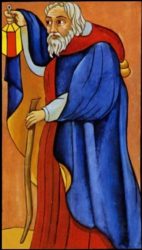There were 12 Renaissance mystics who continued the task of medieval Scholasticism, the alchemical task to convert the intellectualism of Scholasticism into the mystical experience of God. This completes the process of the stages of mysticism, gnosis, magic, and philosophy. In Meditations on the Tarot, we read about the essence of Scholasticism:
Essence of Scholasticism
Dear Unknown Friend, do not scorn medieval scholasticism. It is, in truth, as beautiful, as venerable and as inspiring as the great cathedrals that we have inherited from the Middle Ages. To it we owe a number of masterpieces of thought—thought in the light of faith. And, like all true masterpieces, those of medieval scholasticism are beneficial. They heal the disorientated, feverous and confused soul.
Just as a doctor prescribes for certain physical illnesses a change of climate and air—a sojourn of several months in the mountains—so it would be right and beneficial for him to prescribe to many a person disturbed by “existential problems” and troubled by the “contraditions of life” that he should remove himself for some time into the climate of high scholasticism and breathe there pure air from mental mountains. It is not a matter of a conversion to scholastic philosophy, i.e. that the person in question embraces the scholastic doctrine, but rather of a more elevated intellectual level and, above all, of continuous work for some time with the clear and precise notions of scholasticism on this elevated level.
What is at stake with scholasticism is God, the soul, freedom, immortality, salvation, good and evil. Therefore, do not despise medieval scholasticism, dear Unknown Friend; it is still of value.
The Mystical Impulse
Then we read about the mystical impulse that flows from Scholasticism:
No more is it true that the mystical impulse from the end of the thirteenth and into the seventeenth century was purely and simply a reaction against the “dry intellectualism” of scholasticism. No, the flowering of mysticism during this epoch was the fruit and the result of scholasticism.
St. Thomas towards the end of his life arrived at mystical contemplation of God and the spiritual world and said, on returning from this ecstasy, that his written works now appeared to him “like straw”. Indeed, he wrote nothing after this. The believing thinker thus became a seeing mystic. And this transformation did not take place in spite of his work of scholastic thought, but rather thanks to it—as its fruit and its crowning glory.
Now, what happened to St. Thomas Aquinas also happened to a group of individuals who formed the crest of the wave of scholasticism. Just as St. Thomas, through scholastic reasoning, arrived at contemplation, so did part of advanced scholasticism arrive at mysticism, i.e. at the aim of scholasticism, which is intuition or the state of union of faith and intelligence.
Meister Eckhart, Ruysbroeck, or, lastly, St. John of the Cross are spirits amongst whom you will search in vain for a spirit of opposition to scholasticism. From them also it was true that scholasticism was “like straw”, but they knew at the same time from their own experience that this straw proved to be an excellent combustible. They certainly surpassed scholasticism, but they did so by attaining its aim. For the aim of scholastic endeavour is contemplation, and it is mysticism which is the fruit of the scholastic tree.
The Technique of Thinking
In Eleven European Mystics (GA7), Rudolf Steiner explains:
Scholasticism is in the highest degree a product of human ingenuity. In it the logical faculty celebrated its greatest triumphs. One who aims to elaborate concepts in their sharpest and clearest contours should serve an apprenticeship with the Scholastics. It is they who provide the highest schooling for the technique of thinking. They have an incomparable agility in moving in the field of pure thought. It is easy to underestimate what they were capable of accomplishing in this field. For in most areas of learning the latter is accessible to man only with difficulty.
Deterioration happens when the quality of inner experience is lost:
One can therefore interpret the activity of the mystical theologians Eckhart, Tauler, Suso and their companions by saying: They were inspired by the content of the teachings of the Church, which is contained in theology, but had been reinterpreted, to bring forth a similar content out of themselves anew as an inner experience.
Fruit of the Scholastic Tree
These are the mystics that we will review:
- Meister Eckhart
- Johannes Tauler
- Anonymous (Theologia Germanica)
- Heinrich Suso
- Jan van Ruysbroeck
- Nicolas of Cusa
- Cornelius Agrippa
- Paracelsus
- Valentin Weigel
- Jacob Boehme
- Giordano Bruno
- Angelus Silesius
- St John of the Cross
God willing, we will post insights from the above list, over time.
